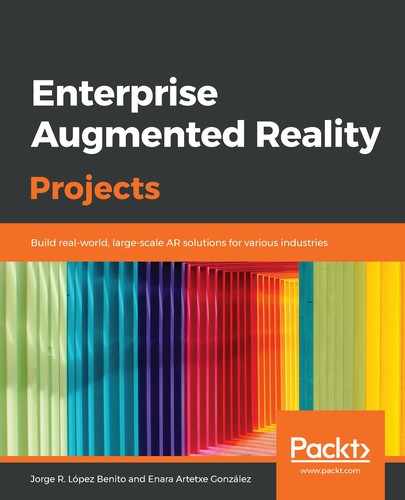In this chapter, you have learned about another of Vuforia's features, ImageTargets, and how to create your own image target and add virtual content to it. You have also learned about how to work with the Unity interface and scripts in order to create messages and buttons, as well as sequenced instructions.
With all this, you have acquired the skills you need to use Vuforia to create an industrial AR guide that can be implemented in mounting, maintenance, or training processes. You have also learned how to customize a step with extra PDF or even video and data files that have been taken either locally (like in this project) or from a remote server by using the OpenURL method with a URL inside it.
Now, you can use this knowledge to create your own guide for your processes and use the current project as a template for it. You can also improve and extend it by using real-life pictures, linking some of the steps to your instruction PDF files or triggering the change from one step to another using signals or information coming from your servers.
As you have seen, the project is also easily deployed in mobile devices, and from here, you can try to migrate it to other types of glasses and see the results. You have also acquired the skills to try the rest of the Vuforia examples, which can be found in the Unity Asset Store, which has been published by PTC: https://assetstore.unity.com/publishers/24484.
In the next chapter, we will completely change the scope and learn how to create an AR portal to transport the user into a virtual 3D world with ARKit for the tourism sector.
